It’s getting to be that time of the year. As we start turning up the thermostat and grabbing heavy coats out of the closet, you know it’s only a short while before winter. This means it’s time to prepare. It may sound like the last thing you want to do, but taking small steps now will save you time, energy, and money throughout the colder months – more time spent being warm and toasty instead of worrying about leaking windows and skyrocketing utility bills.
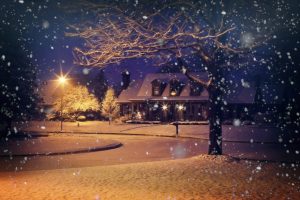
Thankfully, winterizing a house really doesn’t take that much time and is relatively inexpensive. This can also prevent damage during the winter, such as burst sprinkler heads and pipes. These are every property owner’s worst nightmare, not only compromising the plumbing system but destroying building materials with freezing water. Overall, not a fun situation to be in.
Here is a list of small chores on how to prepare your home for winter:
1. Air Duct Cleaning and Furnace Inspection
If you think about how much you will be using your heating system throughout the winter, professional air duct cleaning is a must. It is actually recommended to also have the furnace inspected before turning it on, making sure that it runs efficiently and safely. You can also ask if the service provides tune-ups to ensure their efficiency.
The professional will provide all of the following:
- Replace and clean air filters
- Inspect blower functionality
- Clean fan and motor
- Provide safety check for carbon monoxide
- Clean air supply and return registers
- Inspect and clean all air ducts
- Sealing air vents
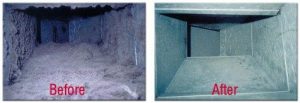
A professional cleaning may cost around $100 or more, but the investment will surely prevent you from dealing with high utility costs in the coming months.
2. Make a Mental Note to Regularly Replace Air Filters
Because you will be using your furnace on a regular basis, the HVAC system will be prone to increased amounts of dust and debris. Not replacing dirty filters will restrict air flow, decrease efficiency, increase energy bills, and even cause a fire. Do yourself a small favor and replace the filter when it’s due.
You can also try out reusable electric filters, ones that you can wash to remove the dust and dirt and use them again.
3. Trim Nearby Trees
Keep in mind that large tree branches hanging near your property – around the windows, driveway, and roof – will become weighed down with ice and snow. Eventually, they can break due to the weight, crashing down onto your car, roof, or windows, breaking them in the process. Due yourself a favor and trim the branches before the first snowfall, and you won’t be worrying about additional holiday expenses every time it snows.
4. Reverse Ceiling Fans
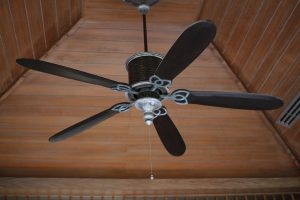
Did you know that running your ceiling fans will help to keep your home warm? Every fan switch will allow you to reverse the blades’ rotation, pushing heated air down and circulating it throughout the room. Statistics have shown that doing this instead of turning on the furnace can save 10% on the heating bill!
5. Turn Down Water Heater
Yes, this sounds crazy, but many installers set conventional water heaters at 140 degrees Fahrenheit, which provides more steam than the household really needs. But lowering the temperature yourself to 120 degrees can actually reduce the water heating costs from 6 to 10 percent.
Using tankless water heaters is another option, but one that is also more costly. But if you notice any signs that your current unit is reaching the end of its life, it is something to consider if your family uses significant amounts of hot water.
6. Install Storm Doors and Windows
Installing storm doors really isn’t as daunting as it sounds. It’s a simple chore that will not only increase energy efficiency by 45 percent but will allow more light and ventilation throughout the home.
Storm windows can be a little more of a chore but still worth the effort of blocking cold drafts from seeping in. They can also be reused for multiple years.
7. Caulking and Weatherstripping
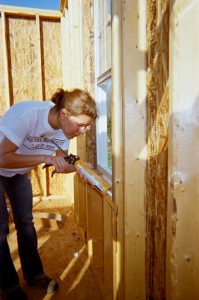
If you place your hand along the cracks of your windows, you can probably feel the cold air seeping through. This is occurring in not only all windows, but in corners, around chimneys, piping, wiring, and under the foundation. Sometimes the leaks are so big that you can hear the air passing through.
Adding caulk and weatherstripping is definitely not a chore you will want to skip during the winterization process. The simple chore can save you anywhere from 5 to 30 percent on the heating bill.
8. Check and Add Insulation
The optimal amount of insulation in the common household attic is 12 inches. If yours has anything less, it’s an inexpensive and easy fix. A good tip to keep in mind though is to avoid buying the insulation with paper-backing; it acts as a vapor barrier that can spur problems in the future.
9. Winterize the A/C Unit and Water Lines
As soon as those straggling warm days are over, go ahead and winterize your air conditioning unit and water supply lines. To do this, remove excess water from the system by draining hoses and pipes as well as switching off the water shutoff valve.
Don’t forget about exterior water spigots, which are especially prone to freezing and bursting if temperatures reach this limit. Also, remember to seal all water leaks around the property. Finally, remove the A/C unit from the window (if it is a window unit) to prevent cold drafts from coming in during the winter.
10. Insulate the Pipes
Especially for exterior pipes, keeping them insulated will not only keep the water heated but will prevent frozen and burst pipes. If not, the freezing temperatures will freeze the water within the pipes, causing it to expand, and apply extra pressure on the pipe. If given enough time, the pipe will burst, spraying water everywhere. The water then freezes and the water damage cleanup cost can put a large dent in the bank account if you choose not to file an insurance claim.
11. Beware the Thermostat
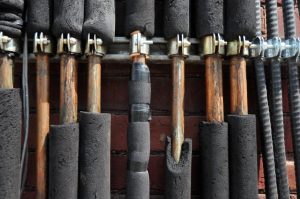
This little heat measuring and setting machine can both save money and put a hole in your wallet. If you have an advanced unit in which you can set it to specific temperatures at different times of the day, it is strongly recommended to take advantage of this advantage. But if not, remember to turn it down before leaving for work and re-adjusting it when coming home. Every degree set lower on the thermostat will save between 1 and 3 percent on the heating bill.
12. Wear a Sweater
Easy enough right? The simple act of putting on a sweater can save up to 4 degrees of body heat. Don’t forget that this is the best part of winter – to get cozy under warm blankets and sweaters while drinking hot chocolate, coffee, or tea, and bonus points if you do it by the fire. But beware that you may not want to do anything else, so it’s important to leave this part until after the chores are done.
Preparing for Accidents
Keep in mind that these simple tasks will not only provide energy efficiency but prevent damage to the interior and exterior structure. But the most common disaster during the winter months is burst pipes. As many are hidden and can burst without us knowing, the damage can spread for extended periods of time. This is why they are often found covering large areas, even with patches of mold growth developing from the excess moisture.

Winter water damage is never a fun situation for property owners. But know that it must be treated as soon as possible to prevent water and mold from spreading to other areas. An emergency water damage restoration company would be the best solution in this case. Arriving within 2 hours of the initial call, these technicians would begin working right away to remove the source of the damage while setting up drying equipment to restore the property structure.
Whether the affected area is icy or contains standing water, a professional company can handle all aspects of the water damage restoration process. From melting the ice and extracting the water to drying out wet building materials and furnishings, these restoration professionals have years of experience and will have the job done in a timely manner. Finally, you can look forward to enjoying or at least battling your way through the rest of the cold season knowing that your property is warm and toasty again.



